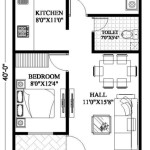Essential Aspects of a Project Management Plan for Building a House
Constructing a house is a multifaceted undertaking that necessitates meticulous planning and execution. A well-defined project management plan serves as a roadmap for the entire project, ensuring that it is completed on time, within budget, and to the desired quality standards.
Here are the crucial aspects to consider when developing a project management plan for building a house:
1. Scope DefinitionClearly define the project's scope, including the desired outcome, the boundaries of the project, and any exclusions. This ensures that everyone involved in the project has a clear understanding of the project's objectives and their roles in achieving them.
2. Timeline and SchedulingDevelop a realistic timeline that outlines the major milestones and dependencies of the project. Use a project management software or a spreadsheet to create a Gantt chart or other visualization tool to track progress and identify potential bottlenecks.
3. Resource AllocationIdentify the resources required for the project, including materials, equipment, labor, and expertise. Determine the availability and costs associated with these resources and allocate them efficiently throughout the project's duration.
4. BudgetingEstablish a detailed budget that outlines all project-related expenses, including materials, labor, permits, and unforeseen costs. Monitor expenses throughout the project to ensure that it stays within the allocated budget.
5. Risk ManagementIdentify potential risks that could impact the project's success, such as delays, weather-related issues, or unforeseen site conditions. Develop mitigation strategies to minimize the impact of these risks and ensure project continuity.
6. Quality AssuranceEstablish quality standards for the construction process and the final product. Conduct regular inspections and implement a quality control system to ensure that the project meets the desired standards and specifications.
7. Communication PlanDevelop a communication plan that outlines how information will be shared among stakeholders throughout the project. Establish regular communication channels, such as progress reports, meetings, and email updates, to keep everyone informed and aligned on project progress.
8. Monitoring and ControlEstablish a system for monitoring project progress and implementing corrective actions as needed. Track key performance indicators, such as schedule, budget, and quality, and make adjustments based on actual performance.
By incorporating these essential aspects into your project management plan, you can significantly increase the likelihood of completing your home construction project successfully. Remember to review and update your plan regularly to ensure that it remains accurate and relevant throughout the project's lifecycle.
Template Project Plan For House Build

House Building Project Template Plans Renovation Projects Planning

Construction Project Plans Explained With Example Summit Reconstruction Restoration
Template Project Plan For House Build

A Sample Microsoft Project Construction Schedule B4ubuild Com

Construction Project Plan Template Spreadsheet Templates

Home Construction Plan Template Remodeling Templates

Home Renovation Project Plan 10 Examples Format

Construction Schedule Template Free Excel Csv

A Sample Microsoft Project Construction Schedule B4ubuild Com








